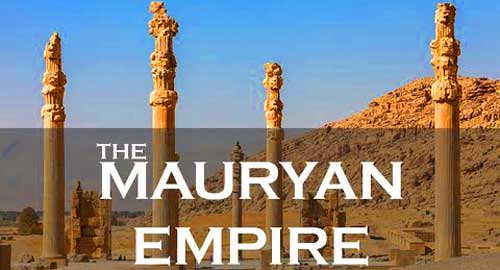It can be appropriately claimed that the Mauryan administration system, though monarchical, was sufficient because it had the privilege of possessing successful administrators such as Chandragupta Maurya, Bindusara Maurya and Ashoka. The King, as the supreme and sovereign authority of the Mauryan Empire, had the supreme executive, legislative and judicial powers and functions in the administration.
It was the responsibility of the Mauryan King, as the head of the executive, to maintain social order by punishing guilty. He was also accountable for the safety and security of his kingdom. Protecting the life and property of his subjects (people of the kingdom) was also the part of his duty.
As the head of the administration the king formulated the general lines of policy which his subordinate officers were bound to follow. He selected ministers and other officers of the royal administration.
As the head of the judicial department, it was the duty of the Mauryan king to ensure justice to the people and rectify their grievances. However, the vastness of the Mauryan Empire restrained the king from personally settling all the cases himself. But as his was the final court of appeal he issued final judgement.
Must Read: History of India in a nutshell
To hear appeals from the people the king of the Mauryan Empire often spent whole day in the court and during this period they even did never care for their personal amenities. King Ashoka the Great made several reforms in the judicial system of the Mauryan Empire. The king had the sovereign power of law making and also the power and right to suspend customs and justice.
As the head of the Military administration of the Mauryan Empire, the king was the supreme commander of the army. The king was not only the ultimate authority of the bureaucracy, but he was also the head of the revenue system of the Mauryan Empire.
No one can deny that kings of Mauryan Empire possessed huge power. However, there were still some limitations upon the royal authority.
Also Read: Who were the Mauryas?
Limitations of Mauryan Empire were:
- Before Ashoka the Mauryan Empire was primarily a Hindu State. According to the Hindu concept, the Supreme Sovereign of the State was Dharma or law and the king had to act as its guardian. The king never dared to challenge the ancient laws and practices.
- In the Mauryan Empire there was a Mantri Parishad in place, whose function was to aid and advice the king. He, in ordinary times, could defy the advice of the officers of this Mantri Parishad, but in times of emergency it was binding on him to listen to the individual and collective advice of his ministers.
- In the Mauryan Empire the Brahmins had huge influence over the king who often dared not to disobey them. Instead he always looked for their support.
As the Mauryan Administration was decentralized in nature, the officials of the provincial administration had the right to be consulted by the king especially in all provincial matters.
Because of the vastness of the Empire the king had to depend on the council of minister for discharging his responsibility and for the success of the Mauryan administration.
Also Read: Important Battles in the Indian History
The council of Ministers of the Mauryan Empire were known as the Mantri Parishad. The number of its ministers was not fixed and varied according to needs. Kautily supported a large Council according to the need of the empire. The aspirant members, to show their ability, had to go through tests of religion, love, fear, and money to qualify for becoming the full-fledged members of the Mantri Parishad.
In the Mauryan Empire there was an efficient and well organized hierarchy of bureaucrats belonging to central executive, judicial and revenue officers for efficient central administration of Mauryan government.
The functions of the Mauryan Empire administrative system were carried forward by several departments. Each of these departments, in turn, was led by a superintendent (Adhyaksha). The Adhakshya was assisted by a band of clerks, accountants and spies etc. for the smooth functioning of the department.
There were two other posts, in addition to the posts of Adhyakshas, of high ranking in Mauryan Administrative System – the “Samaharta” and the “Sannidhata”. The Samaharta was the collector general of revenue for the whole of the Mauryan Empire. And Sannidhata was the office-in-charge of the treasury and store.
Don’t Miss: Timeline of Maurya Empire



